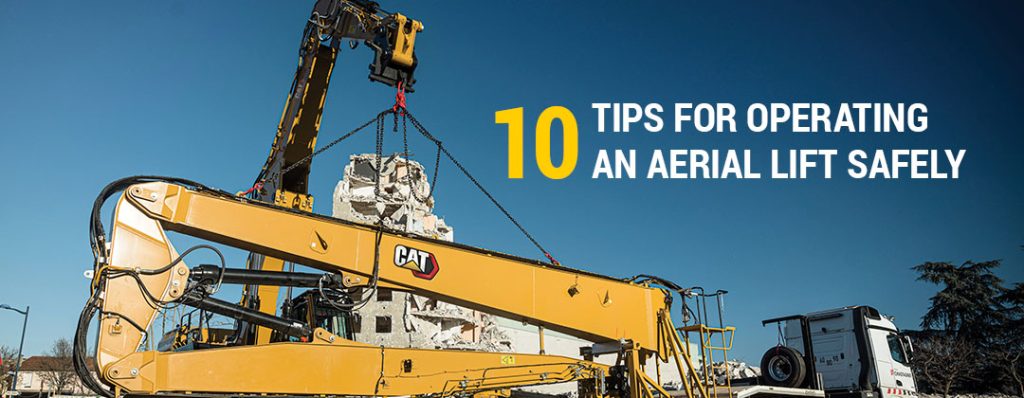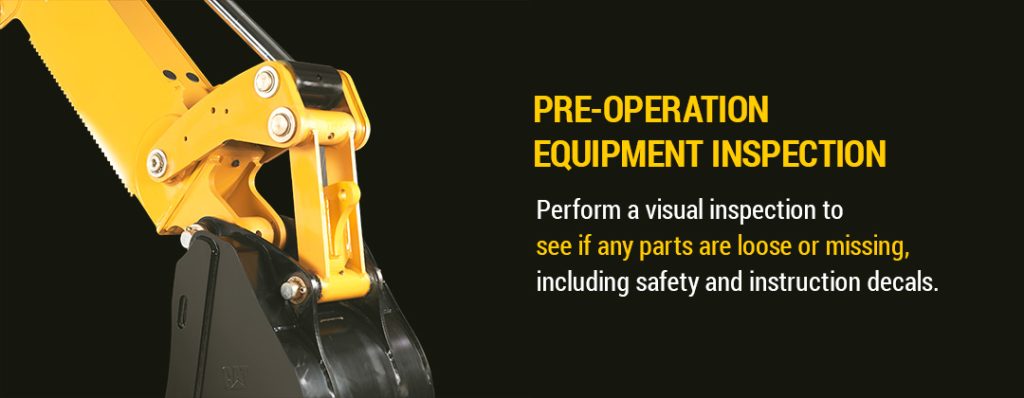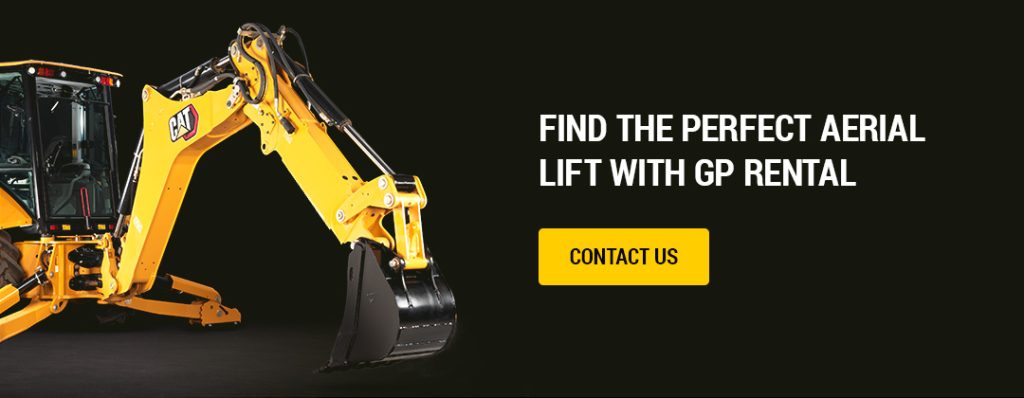
Various industries use aerial lifts for several different tasks. They provide a stable aerial work platform that allows you to reach high work areas like treetops, roofs, ceilings, windows and more. Because aerial lifts create work platforms high in the air, they also introduce new hazards and potential dangers to a work site. As a result, you need to ensure your aerial lift operators and other team members take precautions when working with aerial lifts.
As with operating any heavy equipment safely, you must ensure you use aerial lifts safely. Below we look at common aerial lift hazards and 10 safety tips for operating an aerial lift.
Aerial lifts are designed to be elevated work platforms. As a result, several hazards are standard regardless of the lift type. Boom lifts, scissor lifts and vertical lifts face similar safety concerns, including:
Here are 10 aerial lift safety tips that can help you avoid these common hazards:
Ensure you hire operators with the proper training and who are certified aerial lift operators. OSHA aerial lift regulations state that only authorized personnel can operate aerial lifts. Certified operators undergo comprehensive training on how to operate an aerial lift and what safety procedures to follow. They can also help educate the rest of the crew on the safety measures they may need to follow as pedestrians.
You may want to test your operator’s knowledge before they start working on a site to asses their knowledge. This way, you can be confident you have a skilled, responsible operator performing this essential job.
Before allowing aerial lift equipment onto a job site, you should inspect the area for any hazards. This applies to both indoor and outdoor work areas. The fewer dangerous obstacles an aerial lift encounters, the safer the work site will be.
Some hazards to look for include the following:
Avoid using aerial lifts when there are strong winds, as this may cause a tip-over. Follow the minimum safe approach distances (MSAD) set out by manufacturers when working around power lines or live wires.
Aerial lifts should be inspected before every use as they utilize various cords, pulleys, cables and even hydraulic systems to work. If one of these parts becomes loose, is out of place or breaks, it can be dangerous. Perform a visual inspection to see if any parts are loose or missing, including safety and instruction decals.

Here are a few of the things you should inspect before operation:
Pay close attention to the parts around the bottom of the aerial lift, as a solid base is a significant part of safe aerial work. Check the platform lift is moving correctly. Replace or repair any missing, damaged or malfunctioning parts before you use the lift again.
This should be a hard and fast rule for any equipment you operate. Ensure aerial lift operators wear steel toe boots, protective eyewear, and hard hats or helmets. In addition, anyone working on an aerial lift should wear a body harness or restraining belt to avoid falling. Tie back long hair and secure loose clothing as they may get caught in the machinery.
The manufacturer’s owner or operator manual will clearly state how much weight an aerial lift can handle and how it should be used. Always follow the guidelines in these manuals. Two of the most important instructions in a manual to mind are the weight and reach limits. These should always be adhered to. Going over these limits can affect how the aerial lift works and the safety of your crew.
The manufacturer’s manual will also guide you on how to move the aerial lift completely. This includes if you can move the machine while the lift is partially elevated. Most aerial lifts should not be moved while the platform is elevated as it can increase the risk of tip-overs. However, some models can be moved with the platform in the air but only under certain conditions.
Keep the aerial platform of a lift clear of any obstructions when in use. Avoid putting items such as scaffolding on a lift or in a bucket even if it is below the weight capacity, as it can increase the risk of falling. Adding anti-slip treads can make a lift or bucket safer by giving operators more grip.
Most aerial lights have built-in safety features such as emergency stops, tilt alarms, limit switches and warning lights. These features are in place to ensure the safety of operators and other crew members and should remain on at all times. Other safety features such as outriggers, brakes, pothole protection systems and wheel chocks provide extra stability to aerial lifts.
Most platforms have safety features such as guardrails and entry gates to help prevent operators from falling off the platform. Avoid sitting, climbing or leaning over the platform’s edges and rails, especially if you are unharnessed. On top of being a fall risk, leaning too far over can cause the aerial lift to tip as it may become unbalanced.
Because aerial lifts have a work platform that gets raised, there is a higher risk of tip-overs. A tip-over is when an aerial lift becomes unbalanced or unstable and tips over. This can injure your crew and damage your equipment. Avoid using aerial lifts to carry equipment or material that is over the weight limit. Use all the safety features, such as outriggers, brakes and pothole protectors to ensure the base is as stable as possible. These can help prevent sudden shifts in the machine. Ensure the ground you are working on is firm, stable and level to lower the risk of tip-overs.
Blocking any work areas with an aerial lift is essential to stop workers and other equipment from coming near. Workers are at risk of materials or tools falling on them from the work area, especially if your team is cutting trees. Try to keep other equipment away from aerial lifts, as a small bump can cause it to tip over. Set up work zone warnings or physically barricade the area. Ensure the area you block off covers the lift platform or bucket range.

Maintaining the safety of your work site when using aerial lifts is essential to completing jobs on time and without any injuries. GP Rental provides operator safety training for aerial lifts, telehandlers, forklifts and more to help create a safe work site. We also offer a wide range of aerial lifts for rental. You can visit one of our locations in North Carolina or view our range online today!